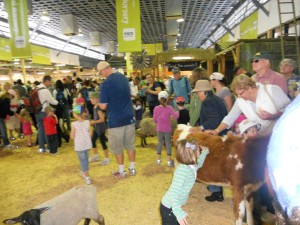Even though it’s 70F during the day in the depths of winter, the Ekka winds, as the locals call them, have hit hard.
There’s a nasty flu strain going around that knocked all of us out for 10 days even with a flu shot, because, getting old and all that.
 We all missed hockey last week, and the guy I coach with just called to say he’s knocked out for this weekend.
We all missed hockey last week, and the guy I coach with just called to say he’s knocked out for this weekend.
The Ekka is the Queensland state fair.
When I ask locals if they go to the Ekka, they say, no, everyone gets sick.
Last year was particularly bad, as at least 50 were sickened with E. coli O157.
There has been no public follow up, no reference to what is being done to improve the situation this year, and no chance we’ll be attending.
Queensland Health, in all its taxpayer-funded splendor, wrote yesterday that visitors to this year’s Royal Queensland Show (the Ekka) are reminded of the importance of washing their hands after interacting with animals.
This year’s show will feature a redesigned animal nursery to minimise the risk of illness due to contact with animals. This will ensure that everyone leaving it must exit through specially designed hand washing stations.
According to Queensland Health, the most important precautionary measure to minimising this risk is timely hand washing, particularly after animal petting or feeding, and avoiding contact with potentially contaminated articles such as animal bedding.
That’s nice, but incomplete. Many pathogens can be aerosolized, and have been in previous petting zoo outbreaks.
A table of petting zoo outbreaks is available at https://barfblog.com/wp-content/uploads/2014/04/Petting-Zoo-Outbreaks-Table-4-8-14.xlsx.
Best practices for planning events encouraging human-animal interactions
Zoonoses and Public Health
G. Erdozain , K. KuKanich , B. Chapman and D. Powell
http://onlinelibrary.wiley.com/doi/10.1111/zph.12117/abstract?deniedAccess
Educational events encouraging human–animal interaction include the risk of zoonotic disease transmission. It is estimated that 14% of all disease in the US caused by Campylobacter spp., Cryptosporidium spp., Shiga toxin-producing Escherichia coli (STEC) O157, non-O157 STECs, Listeria monocytogenes, nontyphoidal Salmonella enterica and Yersinia enterocolitica were attributable to animal contact. This article reviews best practices for organizing events where human–animal interactions are encouraged, with the objective of lowering the risk of zoonotic disease transmission.
